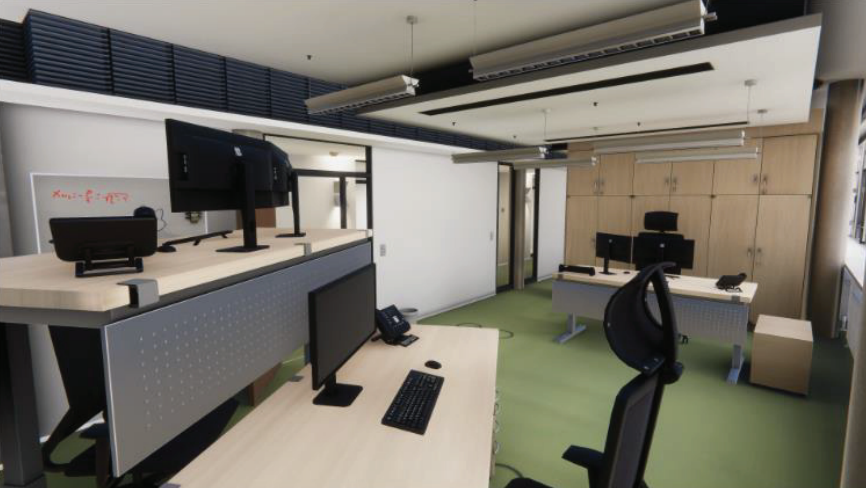Realistic reproduction of environments for interactive real-time simulations
As part of my studies, we, a team of seven had the chance to work with the “Data Science Research Group Zwickau”. We where tasked with recreating their office space as a digital project.
…But what seemed simple at first was more than we thought.
What did we do?
Our first thoughts when we where pitched with the project where “Oh nice we are making a digital room tour for a website”. But once we got a proper introduction to the idea behind the project our focus shifted from a low-end, performant web application to a highly realistic replication of the office spaces. Because our digital replica should be used to train an acutal ai model for a robot that was to drive around in the office space of the DSRG-Zwickau. For us this was a game-changer because we never did anything closely related to machine learning before.
So to start our journey through this almost two year project we visited the office space ourself. And with us we took a lot of meassuring equipment. We meassured everything… from walls to ceilings, insets and desks. We even meassured the phones of the office. We then took pictures of all the objects to extract and recreate textures for our models.
The technical side of things
After multiple trips to the DSRG-Zwickau we finally started with our reproduction process. But as it is, not all of us are as tallented with 3d software as the others. But thats good, because we, the other half of the team could handle the technical side of the project. To realize our project we chose unity as a framework, since we all are familliar with the engine. In addition to the realistic replication of the office space we needed to be able to simulate the behaviour of the robot inside the digital office. Since the DSRG-Zwickau already owned the robot we had access to it’s api. To accomplish a seamless transition between learning inside our simulation and driving in the real world, we completely copied and reconstructed the api in unity. All api calls had the same in and outputs. Just the inner workings of the api was modeled to the workings of unity.
To simulate the information input the robot would receive in the real world, we developed digital sensors for our digital robot friend. All information about the surrounding could be gathered with these sensors. And of course all the sensors where replica of the sensors of the real robot.
How did it go?
The project accompanied us for over 3 semesters and I can say that I am thankfull that it’s over. Not because the project was not fun, but for us this was one of the first mayor long term projects we did. I am truly greatful for the experience with all it’s highs and lows. I think we provided a great digital replication of the real world with our project. We did everythin we could to make training an ai model as seamless and smooth as possible.
As the finish of this milestone our university made it possible for us to write a paper about our findings and present it infront of other scientists. We took all our accumulated knowledge of the project and wrote this paper. This again was a pleassant but also frustrating experience. All the formalities and rules we had to follow. But in the end we published our paper at the NWK2023. If you are interested in a more indepth insight in this project you can read our german paper here.
